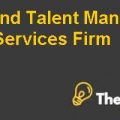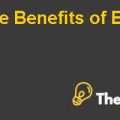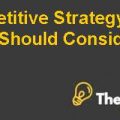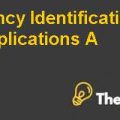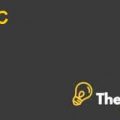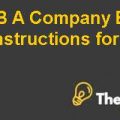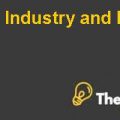
However, this was not the case; Tesco conducted an extensive and exhaustive research on the market dynamics before launching the venture. Then the question arises of what went wrong that made the company shy away from the market and go bankrupt. With costs incurred in the research and time spent in understanding the how the American consumer live, shop and eat, it is doubtful to say that they lost sight on the consumer preference. If that would be the reason, then, Burkley would not be willing to take over the company. This suggests that the company’s stores were not as doomed as the deal suggests it might have. The RTE’s has always worked well for the Whole Foods, but the suspicion is about to what extent the whole foods have succeeded in maintaining its appeal in the marketplace. The venture was supposed to work, then, the reason being delineated to the fact that the customers who do shopping during the day lacked time to do so and also that ready to eat meals were way cheaper than the takeout meals in the market.
Consider the recessionary times when people hold possession of abundant time, but they lack resources to buy. This ultimately had a trickle-down effect on the market for the ready to eat meals. The RTEs required a pre-requisite habit of consuming food, which the American market did not possess, and this was crucial to the venture’s success. The transition was to be brought in a change in habit of pupils’ eating. As a consequence of which another factor that needs utmost attention comes into play, which means now the people would have to act concerned on what they should for in the basket and how would they shop it. This was hard to achieve from a marketer perspective given the constraint of time and a new market preferences. Time to communicate about the new venture and its possible benefits was lagging. Moreover, even if the marketers succeeded in communicating the venture to the targeted audience, yet it cannot be said with complete certainty that the venture will sink in and get adopted from the audience. Therefore, change management might be the issue that the company failed to look at more extensively that required a shift in trend: from old eating habits to the new ones (Bennsion & Guy, 1994, pp. 11-20).
Tesco’s quick move from the market was the lesson learned from them that when the market is not favoring the business model the company must get out of it. The wait and see approach might further deteriorate the reputation and financial performance of the company that takes years to get revamped. The ghost on Tesco’s success was Marks & Spencer the retailer in Britain who bought Brooks Brothers. It hung in the market for almost 13 years selling the acquired product for less than one-third of the original price of the product. This suggests that if the market does not favor the model the business should escape and expand elsewhere. Nevertheless the company’s decision was a smart one; this cannot be said however, it was an easy way out before it confronts Euphoria. The business culture suggests that market share growth is not easy to retain, and the businesses that are well established don’t move out or lose hope that easily. The reason for the American market failure is not because the company did anything wrong in the U.S., but due to challenging market it confronts in the home market. The company was pressurized by the competitors due to which they lost their strategic direction and didn’t effort to revamp poorly stocked stores. The loss of advertising in the new markets and the absence of novelty in the business model hunted the company overall. Therefore, the company suspended operations in the American market as it was an easy way out to cope up with the failure, but the question arises of the step being smart and rational.
Outstrip Wal-Mart stores by Tesco:
In order to make an investment profitable and less risky, it is extremely important for the companies to make comparisons between the desired companies in financial and non-financial terms as well. Comparisons are always difficult to be made because some of the characteristics are unique and specific to the company. However, there are three important criterions through which the most desirable company can be chosen to invest. These criterions are income, growth and value of the company. The two super retail stores have been compared out of which the first one was Tesco, and the other one is Wal-Mart. In order to measure and analyze the value of both the companies, some main key performance indicators are price to earnings ratio, the forecasted price to earnings, price to book and price to sales ratio. Wal-Mart is leading Tesco in all the metrics as the performance of Tesco is far behind from Wal-Mart (Tony & Tonchia, 2003, pp. 947-976)...............................
This is just a sample partial case solution. Please place the order on the website to order your own originally done case solution.

